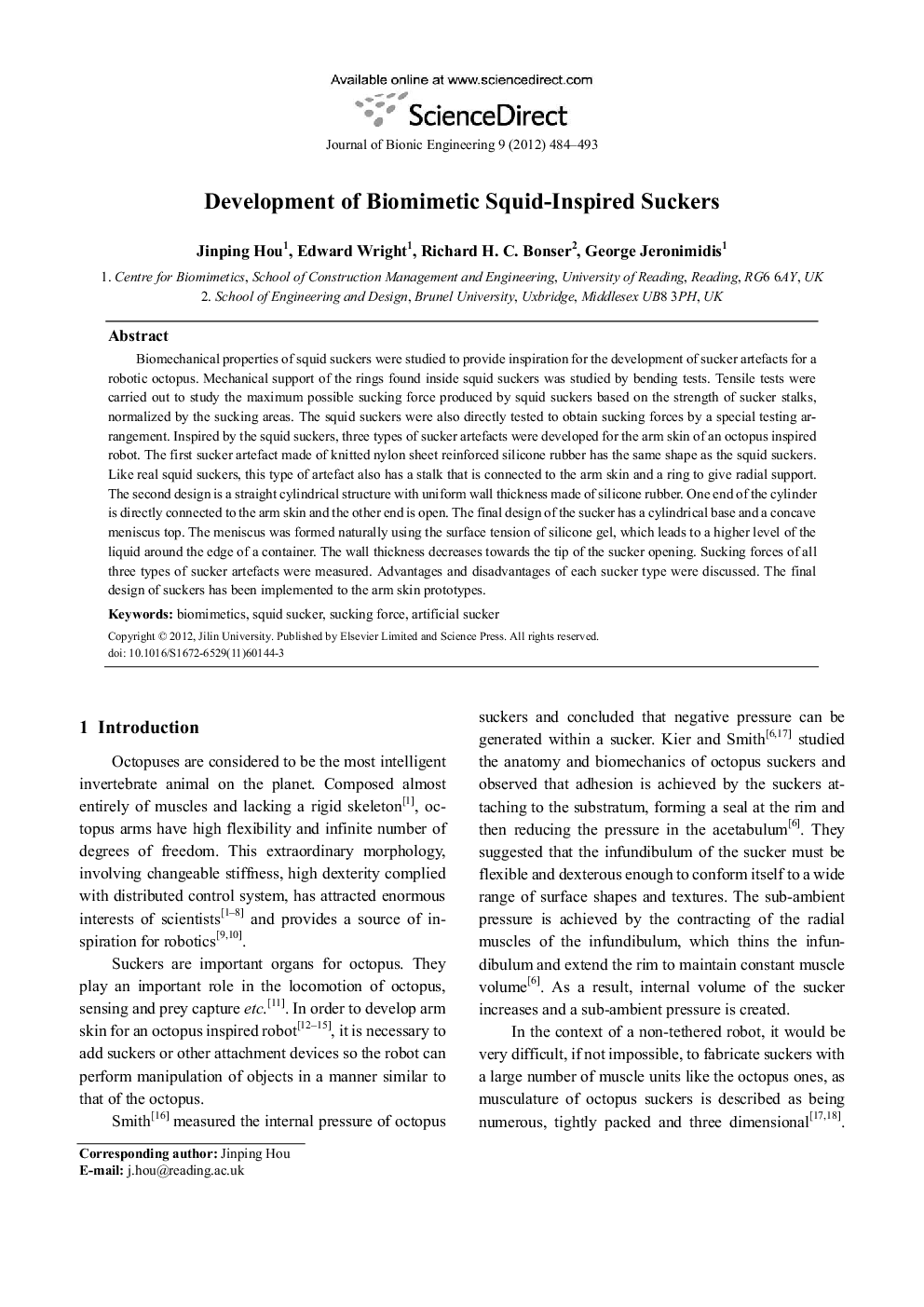| کد مقاله | کد نشریه | سال انتشار | مقاله انگلیسی | نسخه تمام متن |
|---|---|---|---|---|
| 826741 | 907948 | 2012 | 10 صفحه PDF | دانلود رایگان |

Biomechanical properties of squid suckers were studied to provide inspiration for the development of sucker artefacts for a robotic octopus. Mechanical support of the rings found inside squid suckers was studied by bending tests. Tensile tests were carried out to study the maximum possible sucking force produced by squid suckers based on the strength of sucker stalks, normalized by the sucking areas. The squid suckers were also directly tested to obtain sucking forces by a special testing arrangement. Inspired by the squid suckers, three types of sucker artefacts were developed for the arm skin of an octopus inspired robot. The first sucker artefact made of knitted nylon sheet reinforced silicone rubber has the same shape as the squid suckers. Like real squid suckers, this type of artefact also has a stalk that is connected to the arm skin and a ring to give radial support. The second design is a straight cylindrical structure with uniform wall thickness made of silicone rubber. One end of the cylinder is directly connected to the arm skin and the other end is open. The final design of the sucker has a cylindrical base and a concave meniscus top. The meniscus was formed naturally using the surface tension of silicone gel, which leads to a higher level of the liquid around the edge of a container. The wall thickness decreases towards the tip of the sucker opening. Sucking forces of all three types of sucker artefacts were measured. Advantages and disadvantages of each sucker type were discussed. The final design of suckers has been implemented to the arm skin prototypes.
Journal: Journal of Bionic Engineering - Volume 9, Issue 4, December 2012, Pages 484-493